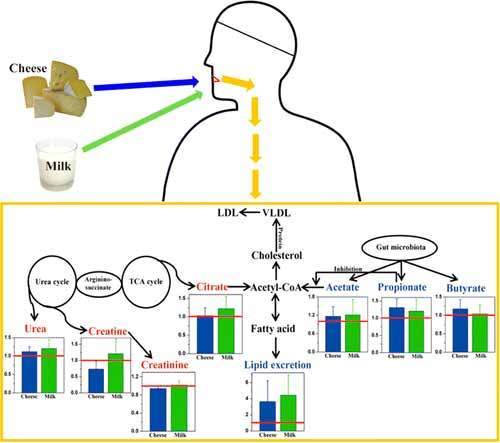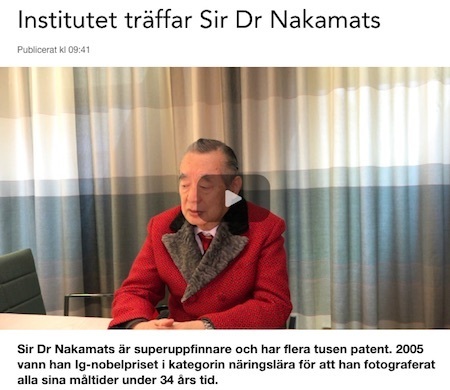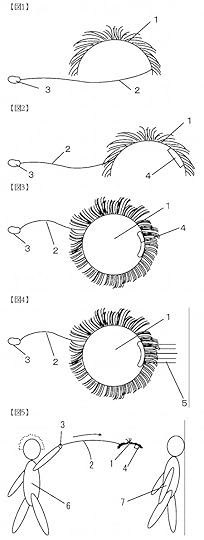Marc Abrahams's Blog, page 336
April 9, 2015
Cheese solution to French Paradox?
Of the many and varied possible solutions offered to explain the French Paradox, wine drinking is perhaps the most common. (examples: [1] [2] ) But not everyone is 100% convinced that the paradox has been resolved once and for all. Some say, perhaps it’s not wine, maybe it’s cheese? A new study (undertaken jointly by the Department of Food Science, Aarhus University, Denmark and the Department of Nutrition, Exercise and Sports, University of Copenhagen, Denmark) is published in JACS’ Journal of Agricultural and Food Chemistry, 2015, 63 (10), pp 2830–2839, and is entitled :
“An NMR-based metabolomics approach was used to investigate the differentiation between subjects consuming cheese or milk and to elucidate the potential link to an effect on blood cholesterol level. Fifteen healthy young men participated in a full crossover study during which they consumed three isocaloric diets with similar fat contents that were either (i) high in milk, (ii) high in cheese with equal amounts of dairy calcium, or (iii) a control diet for 14 days. Urine and feces samples were collected and analyzed by NMR-based metabolomics. Cheese and milk consumption decreased urinary choline and TMAO levels and increased fecal excretion of acetate, propionate, and lipid. Compared with milk intake, cheese consumption significantly reduced urinary citrate, creatine, and creatinine levels and significantly increased the microbiota-related metabolites butyrate, hippurate, and malonate. Correlation analyses indicated that microbial and lipid metabolism could be involved in the dairy-induced effects on blood cholesterol level.”
Future work might investigate whether combinations of wine with cheese could further shed light on the French Paradox.

April 8, 2015
Podcast #6: Trinkaus: The man who counts what annoys him
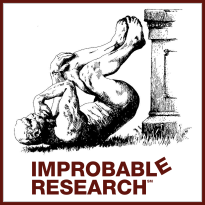 The happily annoyed work of Professor John Trinkaus — who counts things that annoy him — bubble forth in this week’s Improbable Research podcast.
The happily annoyed work of Professor John Trinkaus — who counts things that annoy him — bubble forth in this week’s Improbable Research podcast.
The podcast is all about research that makes people LAUGH, then THINK — research about anything and everything, from everywhere —research that’s good or bad, important or trivial, valuable or worthless. CBS distributes it, both on the new CBS Play.it web site, and on iTunes.
Podcast #6: Trinkaus: The man who counts what annoys him
LISTEN on Play.it or iTunes. (Or DOWNLOAD it, and listen later)
SUBSCRIBE (to receive a new episode, FREE, every week) on Play.it or iTunes.
This week, Marc Abrahams tells about:
John Trinkaus and his approx 100 studies about things that annoy him. (Professor John Trinkaus / Citations of most of Trinkaus’s articles are in the article “Trinkaus: An Informal Look“, vol. 9, no. 3, [the special Everything issue] of the Annals of Improbable Research. / Ig Nobel Prizes awarded in 2003)
Some topics that annoyed Trinkaus. (The reading is performed by Ross MacFarlane of the Wellcome Trust Library and James Harkin and Stevyn Colgan of QI, The Museum of Curiosity, and No Such Thing As a Fish)
Opening an Attaché Case: An Informal Look. (“Opening an Attaché Case: An Informal Look,” J. Trinkaus, Perceptual and Motor Skills, vol. 69, October 1989, p. 618. / The reading is by Dany Adams, associate professor of biology at Tufts University)
“Taste Preference For Brussels Sprouts: An Informal Look. ( “Taste Preference For Brussels Sprouts: An Informal Look,” J. Trinkaus, K. Dennis, Psychological Reports, vol. 69, no. 3, part 2, special issue, December 1991, pp. 1165-6./ The reading is by Dany Adams.)
The mini-opera “The Blonsky Device”, act 2. (The opera premiered as part of the 2013 Ig Nobel Prize ceremony. Henry Akona orchestrated and directed. The opera starred Maria Ferrante (as Charlotte Blonsky), Martin Kelly (as George Blonsky), Philip Lima (as the zookeeper), and Miles Rind (as the patent examiner), with an orchestra of biomedical researchers directed by Dr. Thomas Michel. Karen Hopkin narrates. The opera also featured, in non-singing roles: Melissa Franklin, Peaco Todd, Alex Nemiroski, and Nobel laureates Roy Glauber, Dudley Herschbach, Frank Wilczek, and Eric Maskin.)
The mysterious John Schedler did the sound engineering.

Doom Metal and Experiential Richness
Do you know your Doom Metal from your Goregrind, or your Blackened Death Metal from your Funeral Doom? If not, help is at hand in the form of a taxonomic ‘map’ which was developed by Jonathan Nicholas Piper as part of his PhD in Critical Studies/Experimental Practices at the University of California, San Diego.
The thesis is entitled ‘Locating experiential richness in doom metal’. In which the author emphasizes that:
“ […] doom metal provides a pleasurable musical experience. This experience envelops the listener in something that might be variously described as special, magical, spiritual, amazing, or any number of other descriptors that place it outside of everyday, rational existence. It allows, or even forces, one to experience one’s body in a novel way. Portions of that body of which we are normally unaware are suddenly at the forefront of consciousness; the body is subjected to processes that defy the strict control of rational subjectivity. It is an encounter with the immanence of these portions and processes, a reminder that we are not so simple and cleanly packaged as we might like to think. In these moments, practitioners of doom metal are opened up to experiences, knowledges and understandings from which they are typically cut off. They are provided with a space in which difficult and profoundly significant questions can be explored safely and meaningfully, all the while finding gratifying pleasure in the present moment.”
BONUS: Jonathan Piper is lead tuba player for the California-based band Aquapuke. Here they are performing at UCSD, Nov. 2011. [tuba starts at around 1:00]

Swedish interview with Dr. Nakamats about his self-defense wig
Karin Gillenklev of Sverige Radio interviewed Dr. Nakamats about his patent for a self-defense wig. The interview happened in the faculty club of the Karolinska Institute in Stockholm last week, when Dr. Nakamats was in town as part of the 2015 Ig Nobel EuroTour. Here is the interview:
Here is an image from the patent:

April 7, 2015
Why do so many people so often say “so”?
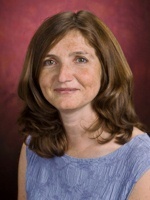
Galina Bolden
So … in this era when so many people use the word “so” to begin so many of their sentences, one scholar has written three studies analysing what happens when people begin their sentences with the word. Galina Bolden’s first “so” study, in 2006, explains that sometimes people use the word as a way of “moving on with [a] conversation that has been temporarily stalled” (“So, how are you?”).
Her second “so” study, in 2008, is called “So What’s Up?”: Using the Discourse Marker So to Launch Conversational Business. Bolden, an associate professor of communication at Rutgers University in New Jersey, expands on the earlier idea….
—So begins the latest Improbable Research column in The Guardian.

April 6, 2015
Putting animals in a funny order (1897 study)
Which animal, in your opinion, is funnier, a Narwhal or a Numbat?
A: Narwhal
B: Numbat
C: Neither
If your answer was A, or B, then it adds weight to the hypothesis that animals can be listed in order of ‘funniness’. Messrs G. Stanley Hall and Arthur Alliń made progress in this area as far back as 1897. The team, reporting in the American Journal of Psychology, Vol. IX. October 1897, No. 1, had previously issued a ‘syllabus’ requesting that readers send them accounts of mirth-provoking incidents.
“In February, 1896, the authors of this paper issued a syllabus (No. 10 in the series for that year), entitled, Tickling, Fun, Wit, Humor, Laughing. This was widely circulated, and brought returns up to the date of writing from, in all, about 700 persons, reporting sometimes on themselves and often collectively from many others, so that nearly 3,000 people and perhaps 4,000 items are represented in the following report.”
With the aid of this quite substantial database, the researchers were able to list not only which animals are funny, but also rank them in order (funniest first). Improbable is quite gratified that in the intervening 117 years (or so), our archives show that we have managed to cover all of them (though not necessarily in the correct order).
Here’s Hall and Alliń’s list – click the links to read Improbable articles featuring the creature in question.
“In our returns the order of frequency in mentioning animals as mirth-provoking is : dog, cat, pig, louse, monkey, rooster, crow, chicken, duck, ape, goose, sheep, cow, horse, pollywog [i.e. tadpole], parrot, turkey gobbler, frog, owl, etc.”
‘The Psychology of Tickling, Laughing, and the Comic’ can be read in full here:
April 5, 2015
Gilbert and Sullivan (and Cambridge, Condensed-Matter Physics, and The Elements)
Tom Lehrer once proclaimed, as part of the song “Clementine,” that songs from Gilbert and Sullivan (especially when it comes to a “rousing finale”) were “full of words and music and signifying nothing.”
Of course, Gilbert and Sullivan often provide a great foundation to write a parody, as Tom Lehrer himself demonstrated in “The Elements” (and in “Clementine”).
Indeed, many others have gotten into the act, and “I Am the Very Model of a Modern Major-General” (which Lehrer parodied in “The Elements”) is a good place to start. University of Cambridge has a Department of Applied Mathematics and Theoretical Physics with the lamentably unpronounceable acronym of DAMTP. Thankfully, this lamentation has been expressed in verse via a parody of “I Am the Very Model of a Modern Major-General.” The lyrics begin with the following verse:
When naming a department,
The shorthand’s not academical,
Particularly when the work
Is mostly theoretical;
Noble and Perspicuous,
Yet positively memorable,
And at the very least,
It should be certainly pronounceable.
Not to be outdone, I decided to get into the act and make fun of condensed-matter physics at the same time. Condensed-matter physics, which is ostensibly (and according to Wikipedia) the branch of physics that concerns “the physical properties of condensed phases of matter” (so it is seemingly well-named), evolved in part from solid-state physics, but it is in fact much more general than mere condensed phases of matter or even physics. I wrote about this in verse in a parody of Gilbert and Sullivan’s “Matter-Patter Trio,” which seemed ideal for my purposes. In one snarky verse about complex systems, I bite the proverbial hand that feeds me (given my own research interests):
If I had been so lucky I would have studied complex systems
But unless I find a power law surely nobody will listen –
I was given good advice when my mentor saw me erring
That to study networks and call it “physics” would be ever so daring,
And then with real data I would truly get to fiddle,
And publish papers in Nature and Science that aren’t worth a piddle.
That particularly vapid, unintelligible patter
Is very sexy nowadays, but we all know it’s really condensed matter!
April 4, 2015
New study: “The Tongue as an Excitable Medium”
A new article (published in New Journal of Physics), called “The Tongue as an Excitable Medium”, posits an explanation for a condition known as “geographic tongue” by treating the tongue as an excitable medium and conducting a mathematical analysis of pattern formation on it.
Here is the abstract:
Geographic tongue (GT) is a medical condition affecting approximately 2% of the population, whereby the papillae covering the upper part of the tongue are lost due to a slowly expanding inflammation. The resultant dynamical appearance of the tongue has striking similarities with well known out-of-equilibrium phenomena observed in excitable media, such as forest fires, cardiac dynamics, chemically driven reaction-diffusion systems and morphogenesis in multicellular organisms. Here we identify GT as a novel example of excitable media dynamics and explore the evolution of the condition from a dynamical systems perspective. We focus on two characteristic aspects of GT in particular: anisotropic expansion of lesions and re-entry of the inflammation into recovering regions. Our investigation sheds light on the evolution of the inflammation and suggests a practical way to classify the severity of the condition, based on the characteristic patterns observed in GT patients.
I have to compliment the authors on their choice of title, because I bet that pattern formation and the theory of dynamical systems are not what you were thinking when you saw the title of this entry. One of the authors, Gabriel Seiden of the Weizmann Institute of Science, has written about his paper in IFLS. (The picture I have used, which was also used in the IFLS, includes a pattern that is rather canonical of excitable media, though not all geographic tongues have a pattern that is this clearly reminiscent of such systems.)
Can you train a cow when/where to wee?
The research team that once looked into the question “Does water or blowing air stimulate Canadian cows to defecate?” has now tried to teach calves when and where to wee, to see if it could be done. Here’s their new study:
“Operant conditioning of urination by calves,” Alison Vaughan, Anne Marie de Passillé, Joseph Stookey, and Jeffrey Rushen. Applied Animal Behaviour Science, 158 (2014): 8-15. (Thank to Stephanie Lürzel for bringing this to our attention.) The authors report:
“It is usually assumed that cattle are not capable ofcontrolling defecation and urination. We tested whether calves could be taught to urinatein a location using either classical or operant conditioning…. Calves trained using operant conditioning had a higher frequency of urinations in the stallthan their controls (means ± SE = 5.25 ± 0.95 vs. 2.32 ± 0.52). The results of our experiments how it may be feasible to train cattle to urinate in specific areas using operant conditioning.”
Here’s further detail from the study, showing how it was done:
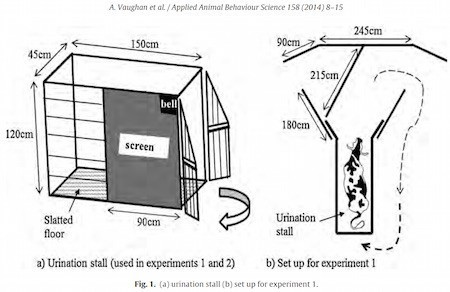
“Designing and Testing an Improved Packaging for Large Hollow Chocolate Bunnies”
Improbable Research podcast #1 savors a peer-reviewed study about improved packaging for large hollow chocolate bunnies.
The study is: ‘Designing and Testing an Improved Packaging for Large Hollow Chocolate Bunnies,’ Gerald W. Greenway and Raul Enrique Garcia, TAPPI Journal, 80 (8), 1977, pp. 133-139 . The authors were at The Package Sealing Laboratory, at the School of Engineering, at the University of Missouri-Rolla. Here’s a visual detail from it:
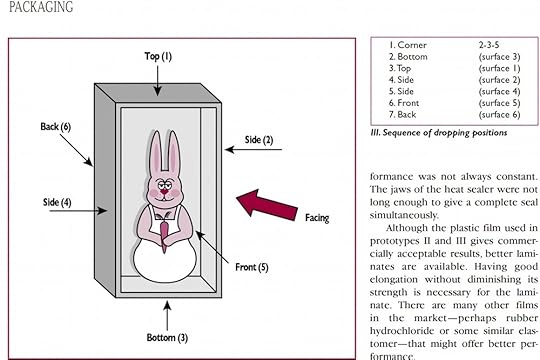
Improbable Research podcast #1 savors many other things, too — as you will hear when you listen to it, munching ever-the-while on a large hollow chocolate bunny or two (which, as is well known, is a delightful way to enhance the already delightful process of listening to an Improbable Research podcast).
Marc Abrahams's Blog
- Marc Abrahams's profile
- 14 followers


